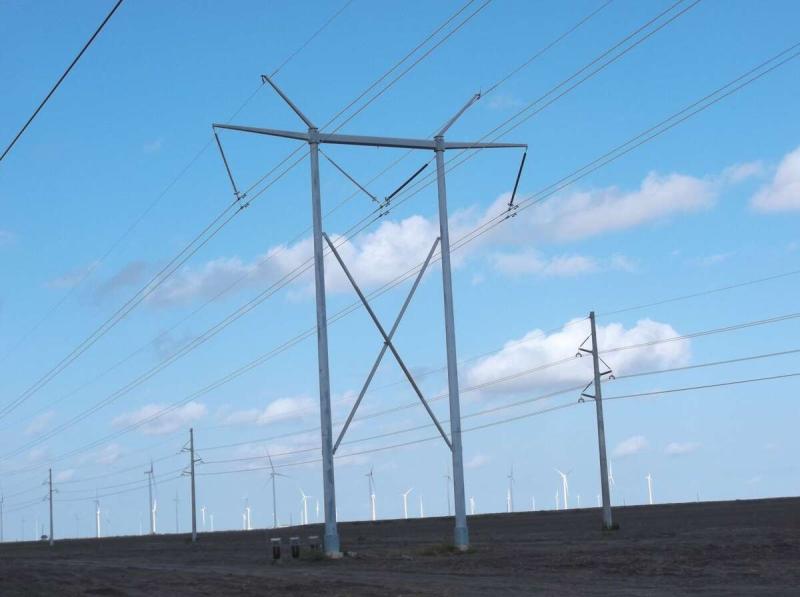Challenged by an increase in demand for affordable electricity, many system planners and transmission engineers are being asked to find economical ways to reduce grid congestion and improve grid reliability. In many cases, grid congestion costs the utilities and the customers they serve tens to hundreds of millions of dollars annually. Restrictions on new line permitting and advances in conductor and related technologies have changed the options available to planners and engineers trying to solve these problems; until the introduction of CTC Global Software, however, there have been limited design tools available that can help illustrate the differences between multiple conductor solutions.
Grid congestion is often described as a condition where existing lines are no longer capable of importing power from less expensive and often remote sources of generation, forcing utilities to develop and use more expensive, local sources of generation. An example of this was in 2004 in the western US where congested transmission lines in California were unable to carry low-cost hydroelectric power from the northwest to the southwest.
In addition to grid congestion, which is typically a function of a transmission conductor’s propensity to sag as it heats up because of its electrical resistance and thermal properties, congested transmission lines also impact grid reliability. Should an adjacent line fail or be taken out of service, the lines that remain in service can quickly become overloaded. This can lead to a cascading outage, as was observed in the eastern US in 2003. Current North American Electric Reliability Corp. (NERC) initiatives may be further tightening acceptable conductor sag limits as it has become apparent, in many cases, that aged conductors and ever changing under-build may compromise safe clearances.
One of the most economical ways of addressing congestion is the use of CTC Global’s high-capacity, low-sag ACCC conductor. Aluminum Conductor Composite Core (ACCC), uses a high-strength, light-weight carbon and glass fiber core that has a low coefficient of thermal expansion, virtually eliminating thermal sag. The core’s decreased weight compared to a steel core also allows the incorporation of some 28 percent more aluminum in any given conductor size. The added aluminum content decreases conductor resistance, so even under heavily loaded conditions line losses are minimized.
CTC Global’s ACCC conductor can carry twice the current of a conventional aluminum conductor steel reinforced (ACSR) conductor. While an aluminum conductor steel supported (ACSS)-high temperature version of ACSR-conductor is also capable of carrying twice the current of a conventional ACSR conductor, because of its electrical resistance, it does so at much higher operating temperatures. In many cases the ACSS conductor’s thermal sag can prevent its higher capacity from being fully realized. In either case, under any load condition, the ACCC conductor’s added aluminum content and decreased resistance reduces line losses by 25 to 40 percent or more.
The ACCC conductor’s high strength, low coefficient of thermal sag, superior self damping and resistance to cyclic load fatigue, corrosion resistance and other attributes can help improve project economics on new and reconductoring projects in any environment. Using ACCC to increase the capacity of an existing line can reduce or eliminate the need to reinforce existing structures, which can save millions of dollars and permitting challenges. For new lines, using ACCC can allow greater spans between fewer and shorter structures, saving time and money, along with the added and long-term energy efficiency benefits.
While increased capacity and reduced thermal sag have obvious advantages as it relates to mitigating congestion costs, improving grid reliability and accommodating NERC requirements, reduced line losses also translate into large savings for the utility, the consumer and the environment. When projects are considered as a whole, the early choices made by planners and engineers can reduce the number of new structures or modifications to existing towers, resulting in project savings that often exceed the cost of the conductor entirely.
Not only can fuel consumption and associated emissions be significantly reduced, generation capacity savings can also be realized. In other words, if line losses are reduced, the generation required to support those losses can be redirected or eliminated. Using ACCC conductor to link a 95 MW wind farm to the grid, for instance, could deliver the same energy as a 100 MW wind farm linked using ACSR conductor. A 5 MW generation capacity savings would impact the project’s bottom line.
Though the ACCC conductor’s attributes and economic advantages have already been selected for over 430 projects worldwide, it is still difficult for system planners and transmission engineers to evaluate this and other ‘new’ technologies vs. traditional conductors with existing engineering tools. The CTC Global Software CCP program can make it easier for them to compare the performance of one conductor option vs. another under different project conditions. The CTC Global Software CCP program streamlines the selection of an optimized conductor solution for the system planner’s or transmission engineer’s own projects.
The CTC Global Software CCP program enables system planners and transmission engineers to input their operating parameters such as load factor, voltage, line length, ambient conditions, anticipated growth rate and other assumptions; compare a number of conductor types and sizes; calculate ampacity, conductor temperature, tension and sag; compare line losses, generation capacity savings and emission reductions; and assess other important economic parameters. This helps reduce the workload associated with comparing conductors and evaluating the systemic benefits that can be made for a specific line’s requirements. As a result, the planner or transmission engineer can identify the best and most economically advantageous conductor and size, whose attributes can be easily demonstrated and shared with others within the organization. To request a free electronic copy CLICK HERE







